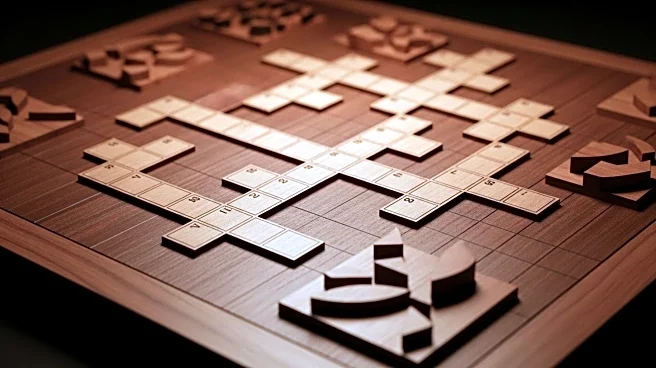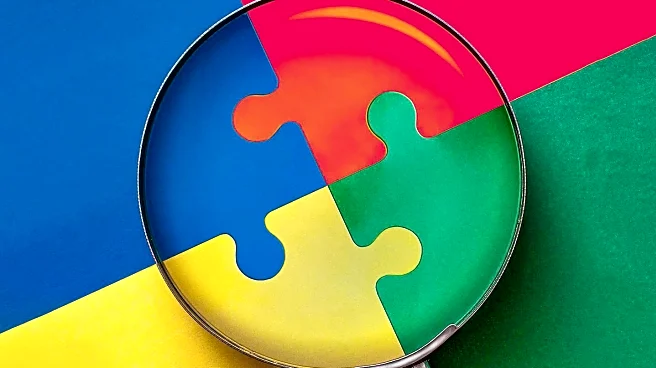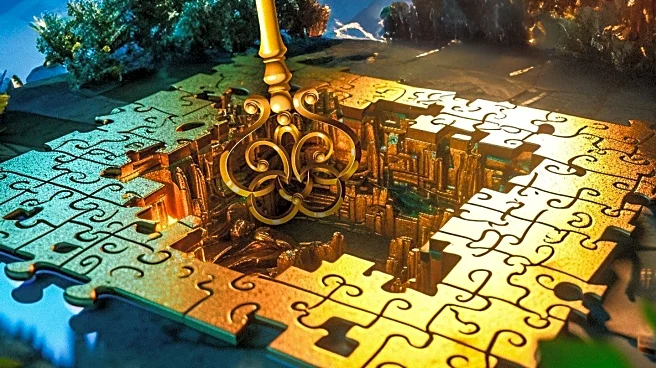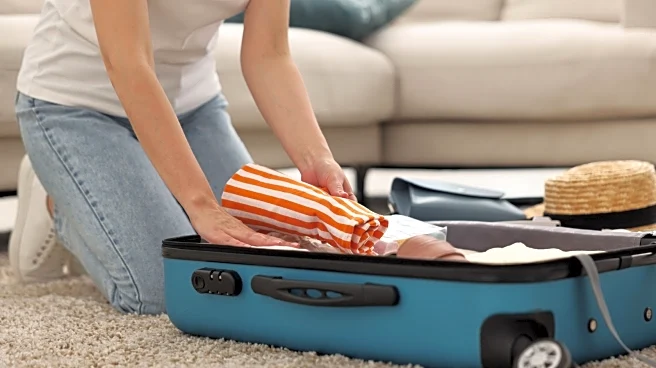What's Happening?
The New York Times has released its crossword puzzle for September 1, 2025, featuring a series of themed clues that incorporate wordplay. The puzzle includes a clue at 17A, 'Getaway where guests are out of fashion?', which leads to the answer 'NUDIST CAMP', indicating a place where guests are not wearing clothes. Other clues include 25A, 'Demilitarized space between antagonists', answered by 'NEUTRAL ZONE', and 51A, 'Annoying fee added to a price', answered by 'NUISANCE TAX'. The puzzle also features 59A, 'Ramen or pho', answered by 'NOODLE SOUP'. These entries share opening syllables that sound similar, such as NU-, NEU-, NUI-, and NOO-, which are variations of the word 'new'. The puzzle also includes a sarcastic question at 35A, 'SO WHAT ELSE IS NEW?'.
Why It's Important?
Crossword puzzles are a popular form of entertainment and mental exercise for many individuals. The New York Times crossword is particularly renowned for its challenging and creative clues, which often incorporate wordplay and thematic elements. This puzzle's use of similar-sounding syllables and clever clues provides an engaging experience for solvers, encouraging them to think critically and creatively. The puzzle's popularity contributes to the cultural significance of word games and puzzles in the U.S., offering a shared activity that can be enjoyed by people of various ages and backgrounds.
What's Next?
As crossword enthusiasts tackle the September 1 puzzle, they may look forward to future puzzles that continue to challenge their linguistic and problem-solving skills. The New York Times is likely to maintain its tradition of offering puzzles with innovative themes and wordplay, keeping its audience engaged and entertained. Puzzle creators may also explore new ways to incorporate cultural references and current events into their clues, adding layers of complexity and relevance to the puzzles.
Beyond the Headlines
Crossword puzzles like those in The New York Times can have educational benefits, enhancing vocabulary and cognitive skills. They also serve as a form of cultural expression, reflecting language trends and societal themes. The use of wordplay and thematic clues can stimulate creative thinking and provide a sense of accomplishment upon completion. Additionally, puzzles can foster community among solvers who share strategies and solutions, creating a social aspect to this solitary activity.












